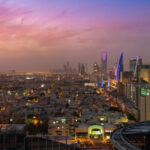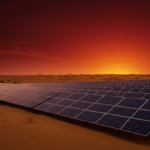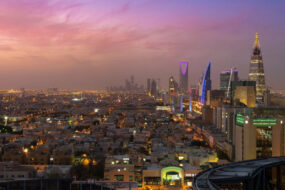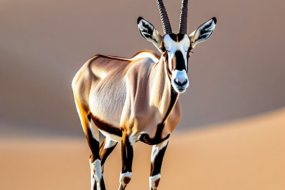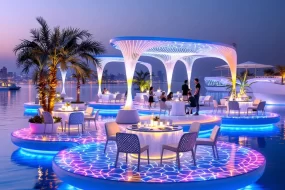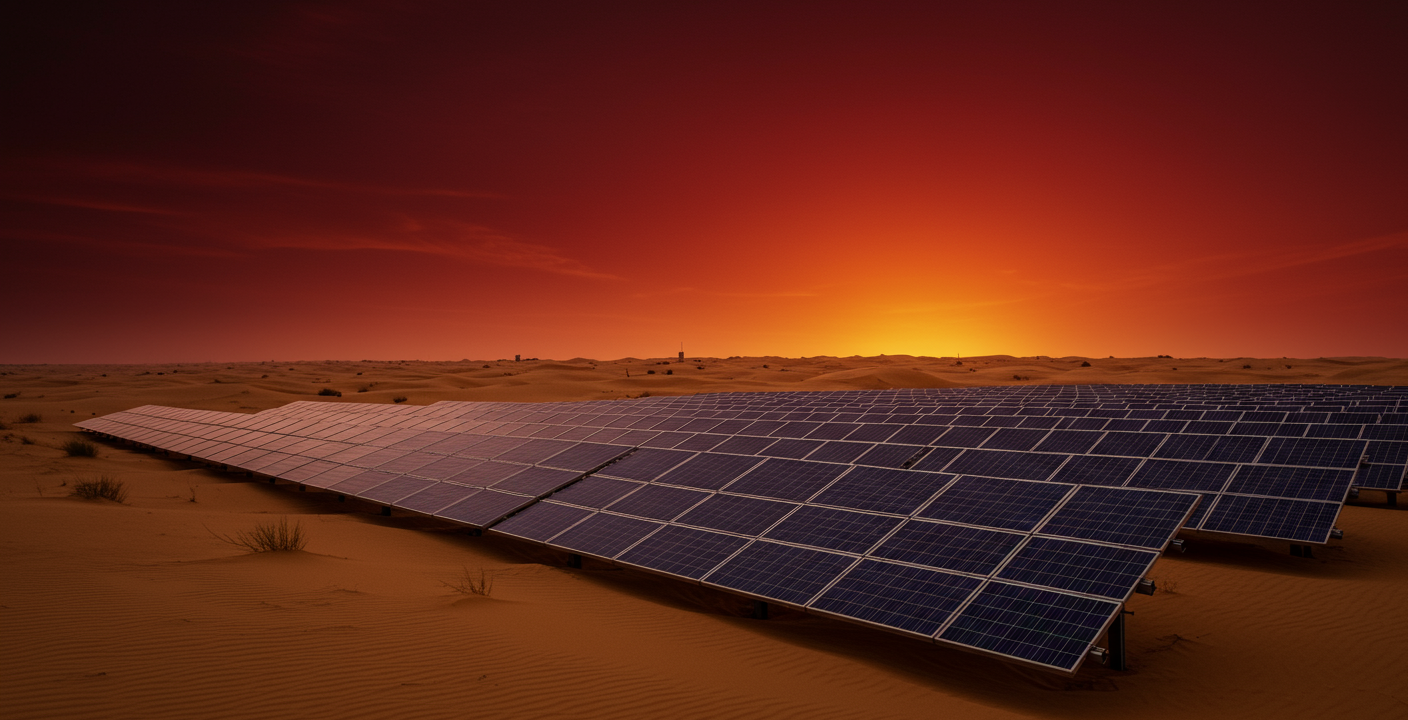

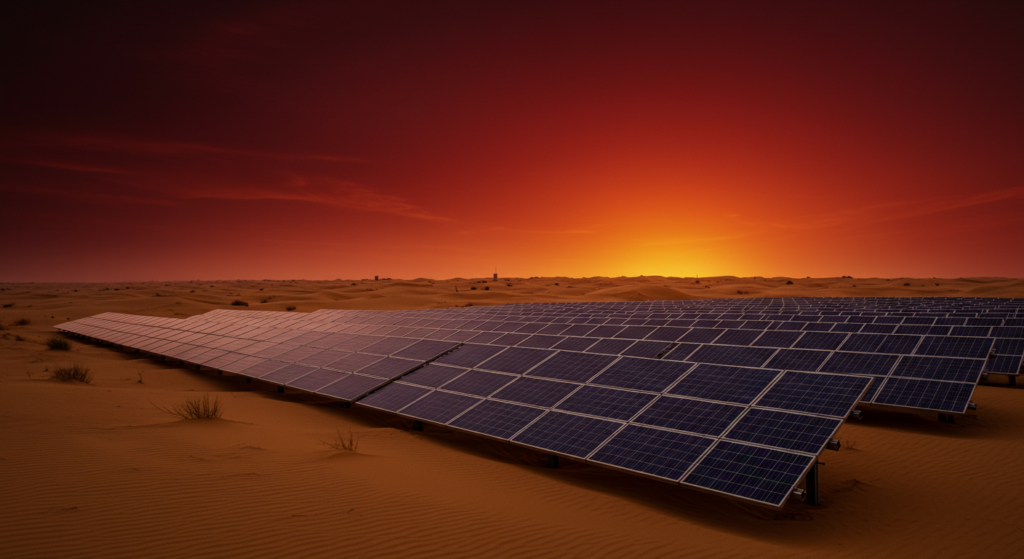
When you think of the UAE, the first images that probably come to mind are its shimmering skyscrapers, luxury malls, and desert landscapes. But beneath the glitz and glamour, something extraordinary is happening—the UAE is laying the groundwork for a renewable energy future. With global demand for clean energy skyrocketing, the UAE has made bold moves to transition away from oil, investing heavily in solar, wind, and hydrogen projects.
The shift is a core part of the UAE’s Vision 2050, where the goal is to generate 50% of the country’s energy needs from clean sources. So, what does that mean for the UAE and, more importantly, the planet? Let’s take a look at the major players leading the charge.
Solar Power: A Desert Dream Turned Reality
The Shams Solar Power Plant
It all started with Shams, the UAE’s first large-scale solar project, launched in 2013. Located in Abu Dhabi’s vast desert, this 100-megawatt solar power plant uses concentrated solar power (CSP) technology to harness the energy of the sun and turn it into electricity. Shams produces enough energy to power 20,000 homes annually, making it one of the most significant solar power plants in the Middle East.
Not only is Shams a trailblazer, but it also marked the beginning of the UAE’s commitment to becoming a solar powerhouse. The desert, once thought of as a barrier, has become one of the UAE’s greatest renewable energy assets.
Noor Abu Dhabi: One of The World’s Largest Solar Power Plant
Fast forward to 2019, and the UAE made headlines worldwide by launching Noor Abu Dhabi, which translates to “light” in Arabic. As the largest single-site solar power plant globally, Noor Abu Dhabi generates 1.2 gigawatts of energy, powering over 90,000 homes and cutting carbon emissions by an impressive 1 million metric tons annually.
This enormous solar farm sits across 8 square kilometers (that’s more than 1,400 football fields!) with 3.2 million solar panels, and it’s a game-changer in the region’s clean energy narrative. It’s a testament to the fact that the UAE is serious about transitioning away from fossil fuels.
Mohammed bin Rashid Al Maktoum Solar Park: A Renewable Mega-Hub
Dubai doesn’t do anything small, and the Mohammed bin Rashid Al Maktoum Solar Park is proof of that. Slated to be the largest single-site solar park in the world by 2030, the Mohammed bin Rashid Al Maktoum Solar Park is a staggering display of the UAE’s renewable ambitions. Situated in Dubai’s desert, the solar park aims to generate 5,000 megawatts of electricity upon completion. Currently, the park is already producing over 1,000 megawatts of power, enough to supply hundreds of thousands of homes.
One of the most innovative aspects of the park is its hybrid approach—combining photovoltaic (PV) solar technology with Concentrated Solar Power (CSP) to maximize energy output. The solar park is part of Dubai’s Clean Energy Strategy 2050, which envisions the city deriving 75% of its energy from clean sources by 2050.
Dubai is also pushing boundaries with the introduction of solar-powered EV charging stations, integrating renewable energy into everyday life. It’s clear that solar power isn’t just an experiment in the UAE—it’s a fundamental part of the nation’s future.
Hydrogen: The Next Big Leap in Renewable Energy
While solar power has been leading the charge, hydrogen is quickly emerging as the UAE’s next renewable energy frontier. Hydrogen, often dubbed the “fuel of the future,” is a versatile energy carrier that can be used in transportation, industrial processes, and even energy storage.
The UAE’s First Green Hydrogen Plant
In 2021, the UAE took a significant step towards a hydrogen-powered future by launching its first green hydrogen plant. The facility, located at the Mohammed bin Rashid Al Maktoum Solar Park, uses solar power to produce hydrogen in an entirely carbon-neutral process. This project is a milestone for the UAE, as it paves the way for hydrogen to play a central role in the country’s energy transition.
Green hydrogen can be used as a clean fuel alternative for transportation and industries that are hard to decarbonize, such as steel production. It’s also seen as a critical piece of the puzzle in reducing global carbon emissions. As the world looks for ways to meet climate goals, the UAE’s investment in hydrogen positions it as a leader in the next wave of renewable energy technology.
Hydrogen Fuel Cell Vehicles: A Glimpse of the Future
Another exciting development is the UAE’s interest in hydrogen fuel cell vehicles. Hydrogen-powered cars are seen as a cleaner alternative to traditional electric vehicles because they only emit water vapor. In 2021, Toyota and Abu Dhabi’s Department of Energy unveiled plans to launch a fleet of hydrogen-powered cars in the UAE.
With this step, the UAE is looking beyond just electricity and aiming to diversify its clean energy portfolio. Hydrogen vehicles could soon become a common sight on the streets of the UAE, offering residents a new way to reduce their carbon footprint.
Wind Energy: Harnessing the Gulf’s Coastal Winds
While solar and hydrogen are the stars of the UAE’s renewable energy future, wind energy is also playing a supporting role. The UAE’s coastline experiences strong winds, making it an ideal location for wind farms.
The Sir Bani Yas Island Wind Farm
One example of the UAE’s wind energy potential is the Sir Bani Yas Island wind farm, located off the coast of Abu Dhabi. Although still in its early stages, this project is a crucial step toward harnessing wind power in the UAE. The wind farm will complement the country’s solar initiatives, providing a steady and reliable source of renewable energy.
While wind energy projects aren’t as widespread in the UAE as solar, they represent an essential piece of the puzzle. The UAE is continually exploring new ways to diversify its renewable energy portfolio, and wind is expected to play a more significant role in the years to come.
The UAE’s Bold Vision: Masdar City
Masdar City: The World’s First Carbon-Neutral City
If you want a glimpse of the future of sustainable living, look no further than Masdar City. Located near Abu Dhabi, Masdar City is one of the world’s most ambitious sustainability projects. The city is designed to be entirely carbon-neutral, relying solely on renewable energy sources such as solar and wind.
Masdar City is home to the Masdar Institute, which focuses on renewable energy research, and it’s also a hub for clean technology companies. The city is a living laboratory for sustainability, testing cutting-edge technologies such as autonomous electric vehicles, smart grids, and green building materials.
In a world grappling with climate change, Masdar City is a shining example of how renewable energy can be integrated into urban life. It’s a glimpse of what cities of the future could look like—clean, green, and entirely powered by renewable energy.
The Path Forward: What’s Next for Renewable Energy in the UAE?
The UAE’s shift from oil to renewable energy is nothing short of revolutionary. In just a few short years, the country has positioned itself as a global leader in solar, hydrogen, and wind energy. And with ambitious projects like the Mohammed bin Rashid Al Maktoum Solar Park, Noor Abu Dhabi, and Masdar City, the UAE is not just keeping pace with the global energy transition—it’s leading the way.
But the journey is far from over. The UAE has set ambitious targets for the future, including reducing its carbon footprint and generating 50% of its energy from clean sources by 2050. The transition won’t be easy, but the UAE’s renewable energy projects show that the country is serious about leaving its oil-dependent past behind.
As the UAE continues to innovate, one thing is clear: the future of energy is renewable, and the UAE is at the forefront of that future.
Recent Post
How To Check Your NOL Card Balance:
- March 18, 2025
- 8 min read
The Future of Renewable Energy in the
- March 17, 2025
- 7 min read
8 Unique Wildlife Encounters in the UAE
- March 13, 2025
- 5 min read



